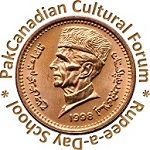1. In addition to the knit stitch, what is the second basic knitting stitch?
There are other basic stitches like the warp and weft, but these two stitches form the basis of all knitting projects and are by far the most common. 84% of players have answered correctly.
2. What does "psso" mean?
The technique of slipping a stitch and passing the slipped stitch over creates a hole for lace and other openwork knitting. 94% of players have answered correctly.
3. What is the gauge (or tension) in knitting patterns?
Learning the importance of gauge was a hard lesson for me. I made several tiny and huge garments before I got the message! 84% of players have answered correctly.
4. What do the stitches used in Aran knitting represent?
The fisherman themselves often made their own sweaters to be used during those cold days on the water. The Aran Islands became famous for their intricate knitting patterns. 85% of players have answered correctly.
5. What is it called when you knit one row and purl the next?
It's aka a sticking stitch. 85% of players have answered correctly.
6. What is the purpose of blocking your knitting?
Blocking is especially important when finishing lace designs in order that the effect will be at its maximum. 87% of players have answered correctly.
7. What is a knitting knobby?
Knitting knobbies originated with a large wooden spool from sewing thread, 4 small nails and a large darning or blunt point needle. The nails were hammered into the spool and yarn wrapped around. 39% of players have answered correctly.
8. Where does mohair yarn come from?
Mohair is taken from the mohair goat. It is sometimes combined with other fibres for strength like wool or synthetics. 76% of players have answered correctly.
9. What is a knitting measure used for?
Without a knitting measure, choosing the right needle can become a problem as some needles lose the numbering on the top knob with age, if they ever had one. 70% of players have answered correctly.
10. Where did the Argyll pattern come from?
The original tartan that provided the inspiration for this kind of knitting was clan Campbell of Argyll, hence the name. 84% of players have answered correctly.
11. How is the 'Fair Isle' technique traditionally worked?
The correct answer was in the round The Fair Isle style of knitting is a multi-coloured pattern that is achieved by stranding yarn across the back of the design when not in use. 52% of players have answered correctly.
12. What is a garment chart, as it is sometimes used in knitting?
The garment chart often replaces written instructions. It is graphed on graph paper, using symbols and or colors, with one square equal to a stitch. 79% of players have answered correctly.
13. What is the whipstitch used for in knitting?
This joining stitch is one of several that can be used to assemble the pieces of a knitted garment or item. 84% of players have answered correctly.
14. What is another name for 'duplicate stitch'?
Duplicate stitch is used to embroider designs on the surface of a solid knitted item. It was first seen in Swiss knitted items, hence the name. 51% of players have answered correctly.
15. What tool is used to hold small amounts of yarn for multi-colored knitting?
This word may have been borrowed from sewing, but today's knitting bobbins are often colorful plastic shaped for easy winding and use. 71% of players have answered correctly.
